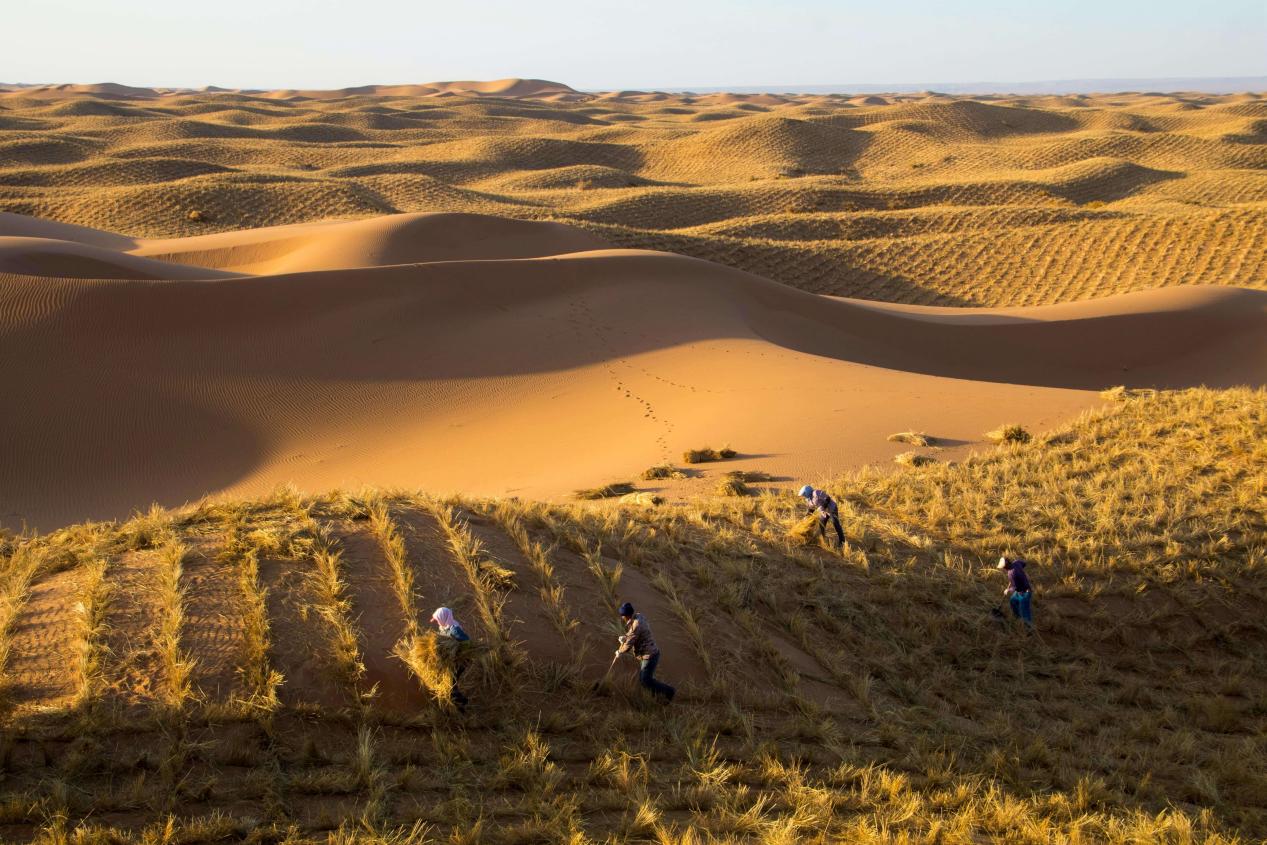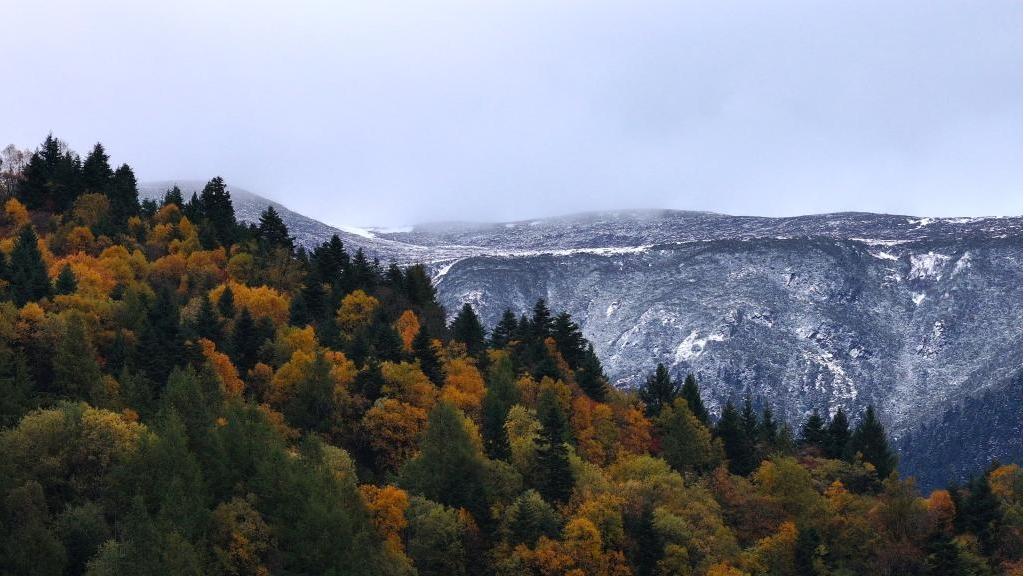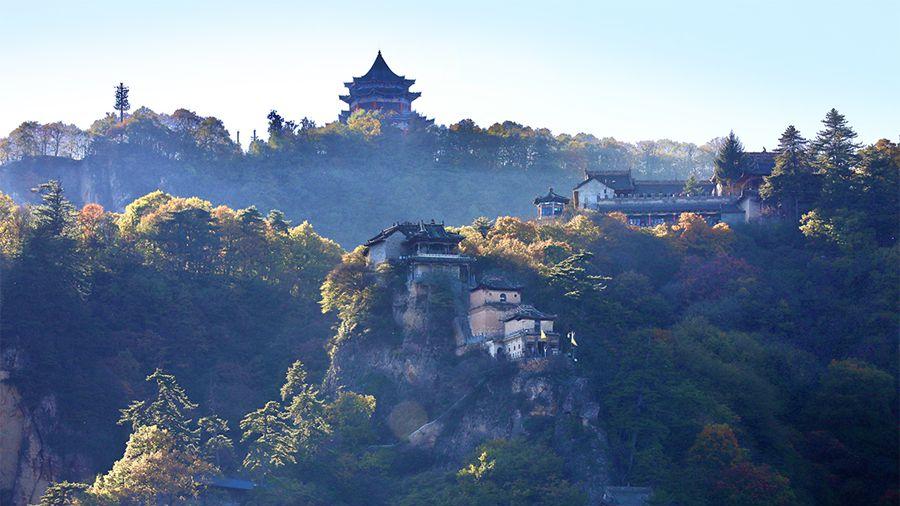Wheat straw grids: China's ingenious solution for sand control

Sand control workers fix sand in wheat straw grids in Zhongwei, northwest China's Ningxia Hui autonomous region. (Photo provided by the publicity department of Zhongwei)
As dawn breaks over the southeastern edge of the Tengger Desert, sand control workers are already at work. They spread bundles of wheat straw, press them into the sand, and shape them into neat squares. Across the vast sea of dunes, these crisscrossing "grids" of straw quietly take root, weaving a net that holds back the drifting sands.
The "wheat straw grid" is a sand-fixing method uniquely developed in China. Each small square stabilizes sand, conserves moisture, and reduces wind erosion. This innovation not only ensures the safe operation of the Baotou-Lanzhou Railway but also builds an ecological shield that safeguards China's northwest from desert encroachment.
Driving from Zhongwei in northwest China's Ningxia Hui autonomous region into the Tengger Desert, one sees vast dunes clothed in a gray-green "checkered shirt." Up close, each square of straw firmly anchors the shifting sands. Inside the grids, shrubs like Caragana and sea buckthorn sway in the wind, adding vibrant green to the once-barren landscape.
This area was once among the worst-affected regions by wind and sand disasters in China. In the 1950s, after countless experiments, Chinese scientists and sand control workers in Zhongwei devised this pioneering technique -- laying locally available wheat straw in square patterns on the sand to form interlocking protective belts. Since then, generations of sand control workers have created the miracle of "man advancing, sand retreating," contributing Chinese experience to the global fight against desertification.
The method is as ingenious as it is practical. Workers place bundles of wheat straw on the sand in square patterns, pressing each bundle halfway into the ground with a shovel, and pushing sand toward the roots to keep the exposed straw upright.
When construction began on the Baotou-Lanzhou Railway in 1954, a 55-kilometer stretch in Zhongwei had to cross the Tengger Desert six times. Preventing windblown sand from burying the tracks became a top priority.

Sand control workers make wheat straw grids in the Tengger Desert. (Photo/Ma De)
"At first, we tried covering the surface with pebbles, mixing asphalt with sand, and laying reed mats, but none worked well," recalled Tang Ximing, a senior forestry engineer with the Zhongwei state-owned forestry farm.
To stabilize the surface and help vegetation take root, researchers experimented with layers of straw and clay, but the straw was easily blown away, Tang said.
After extensive trials, they discovered that forming one-meter-square straw grids effectively reduced wind speed, trapped sand, and stabilized the surface.
"As the buried straw decomposes, it enriches the soil with organic matter, fostering microbial and plant growth. Over time, it forms a thin layer of biological soil crust," Tang explained, adding that with this crust, shrubs can be planted, and the desert gradually transforms.
From then on, this low-cost and easy-to-apply method spread widely across the Tengger Desert. Over the past 70 years, more than 430,000 mu (about 28,666 hectares) of straw grids have been laid in Ningxia's section of the desert, and over 100 million sand-loving plants have been cultivated.
Today, Zhongwei has totally put desertification in control. The Tengger Desert has retreated 25 kilometers, while a 42-kilometer-long, 800-meter-wide sand control belt comprised by straw grids, shrubs, and trees now protects the Baotou-Lanzhou Railway.
Driven by technology, sand control has become increasingly mechanized and automated. In 2021, Zhongwei introduced a brush-type mesh rope barrier system with mechanical installation, improving efficiency by more than 60 percent and extending the service life from two years to five or six. A newly developed multifunctional sand-fixing vehicle can lay 8.5 mu of wheat straw grids per hour, while drones and electric planting tools are now used for post-installation maintenance.

Sand control workers make wheat straw grids in the Tengger Desert. (Photo/Ma De)
Since the 1980s, the Zhongwei method has been applied far beyond the Tengger Desert. It is seen along the Gantang-Wuwei Railway and Qinghai-Xizang Railway, and has also become a symbol of China's ecological cooperation with the world. In 1994, Zhongwei sand stabilization tree farm was enlisted in the Global 500 Roll of Honor for Environmental Achievement established by United Nations Environment Programme. Over the years, hundreds of experts from more than 50 countries and regions have visited the tree farm, calling it a miracle sand control in human history.
Today, areas once desolate and lifeless have become tourist attractions, thanks largely to the wheat straw grids. "Along the Baotou-Lanzhou Railway's sand control zone, we've established a desert plant garden, increasing the number of plant species from fewer than 25 in the 1950s to more than 450 today," said Sun Yanlin from Zhongwei's culture and tourism department. The vast sea of sand has turned green, attracting great bustards, golden eagles, steppe eagles, swans, red foxes, and other wildlife.
Building on ecological restoration, nearby towns and villages have developed integrated models combining agriculture, culture, and tourism. In 2024, Shapotou scenic area in Zhongwei received 1.46 million visits, generating total tourism revenue of 428 million yuan ($60.6 million).
Photos
Related Stories
- Autumn scenery of wetland parks in Yinchuan, China's Ningxia
- Autumn scenery of Liupanshan Mountain in China's Ningxia
- Farmers harvest apples at plantation in Shapotou District, China's Ningxia
- China's Ningxia establishes conservation and research center in Helan Mountain to protect snow leopards
- Farmers harvest giant Juncao in Minning Town, China's Ningxia
Copyright © 2025 People's Daily Online. All Rights Reserved.









